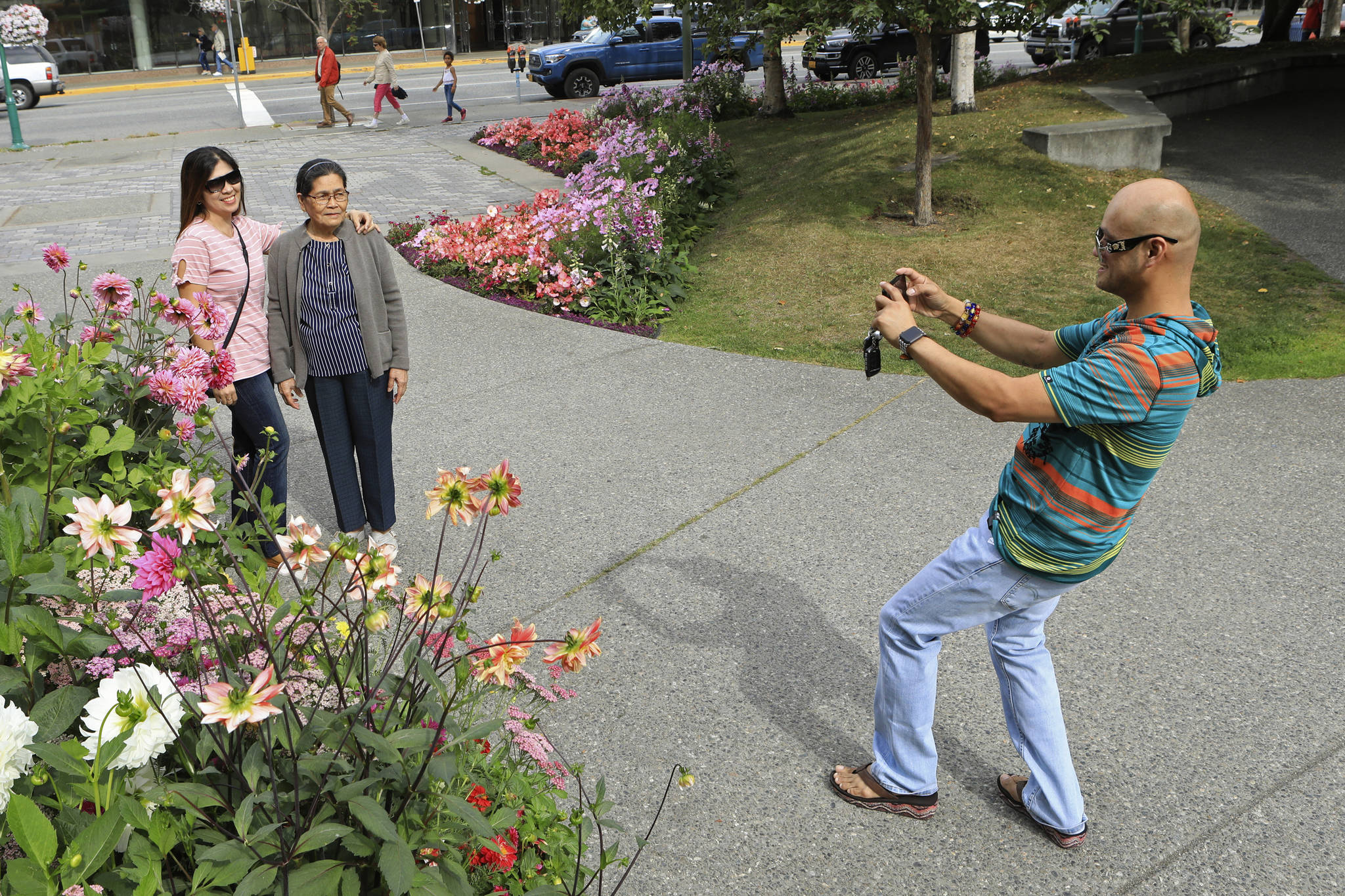ANCHORAGE — Alaska has been America’s canary in the coal mine for climate warming, and the yellow bird is swooning.
July was Alaska’s warmest month ever, according to the National Oceanic and Atmospheric Administration.
Sea ice melted. Bering Sea fish swam in above-normal temperatures. So did children in the coastal town of Nome. Wildfire season started early and stayed late. Thousands of walruses thronged to shore.
Unusual weather events like this could become more common with climate warming, said Brian Brettschneider, an associate climate researcher at the University of Alaska Fairbanks’ International Arctic Research Center. Alaska has seen “multiple decades-long increases” in temperature, he said.
“It becomes easier to have these unusual sets of conditions that now lead to records,” Brettschneider said.
Alaska’s average temperature in July was 58.1 degrees. That’s 5.4 degrees above average and 0.8 degrees higher than the previous warmest month of July 2004, NOAA said.
The effects were felt from the Arctic Ocean to the world’s largest temperate rainforest on Alaska’s Panhandle.
Anchorage, the state’s largest city, on July 4 for the first time hit 90 degrees at Ted Stevens Anchorage International Airport, 5 degrees higher than the city’s previous recorded high of 85 degrees.
Sea ice off Alaska’s north and northwest shore and other Arctic regions retreated to the lowest level ever recorded for July, according to the National Snow and Ice Data Center at the University of Colorado.
Arctic sea ice for July set a record low of 2.9 million square miles. That was a South Carolina-size loss of 30,900 square miles below the previous record low July in 2012.
Sea ice is the main habitat for polar bears and a resting platform for female walruses and their young. Several thousand walruses came to shore July 30, the first time they’ve been spotted in such large numbers before August.
Effects were less obvious in the Bering Sea off Alaska’s west coast. Lyle Britt, a NOAA Fisheries biologist who oversees the agency’s annual Bering Sea groundfish survey, was on a trawler east of the island of Saint Matthew during the first week of July.
“The temperature out there for us was in the high 70s,” Britt said. “On those boats, everything up there is designed to conserve heat, not vent heat. It was unbearably warm inside the boat.”
On the ocean bottom, Britt’s crew for the second consecutive year found scant evidence of a “cold pool,” the east-west barrier of extremely cold, salty water that traditionally concentrates Pacific cod and walleye pollock, the species that make fast-food fish sandwiches, in the southeastern Bering Sea.
Alaska’s wildfire season started in April. July’s dry and hot temperatures extended it. An expected rainy season marked by southwest winds pushing up moisture and soaking fires did not show up on time, said Tim Mowry, spokesman for the state Division of Forestry.
“It extended our fire season through the month of July,” Mowry said.
Alaska by mid-July can usually free up crews to fight fires in other states, but only about 15 people have left this year. High fire danger around Anchorage, the Kenai Peninsula and the Matanuska-Susitna Borough has kept crews in Alaska.
“We’ve pretty much held on to all our resources in-state at this point,” Mowry said.
A burn ban and water sprinkler restrictions remain in place for Haines, just outside the Tongass National Forest. July extended a drought in the rainforest, said Rick Thoman, another climate expert at the International Arctic Research Center.
Cities in the southern half of the rainforest have limited or no hydropower because of low water levels. That means power has to be generated by burning diesel fuel, Thoman said.
July was the hottest month measured on Earth since records began in 1880, NOAA reported Thursday. And a United Nations report earlier this month warned that global warming threatens food supplies around the world.
But Alaska’s recent heat has had silver linings. Barley and other crops are ready to harvest, said Stephen Brown of the University of Alaska Fairbanks Cooperative Extension Service.
The growing season has been extended by a month, and if extra days become the norm, they will expand what can be grown in the state. Brown used heat radiated from his blacktop driveway to grow fruit not usually seen outside greenhouses.
“I’ve got a bumper crop of tomatoes and jalapenos this summer,” he said.
On the other hand, the weather has stressed birch trees and left them vulnerable to leaf-eating insects.
“That gives the leaf miners opportunity to really whack them good,” he said. “I’m looking at my lawn right now, and I need to rake leaves.”
Brettschneider, the climate researcher, sees mostly negative effects from the hot July and climate warming. Alaska looks the way it does because of the temperature regime, he said, and in 50 years, Alaska may look like Idaho.
“We should expect changes. We should expect the forests to be in different locations. We should expect wildlife to move. We should expect plants to move. And in many cases, if they can’t move fast enough, we should expect them to just go away,” he said.
• This is an Associated Press report by Dan Joling.

